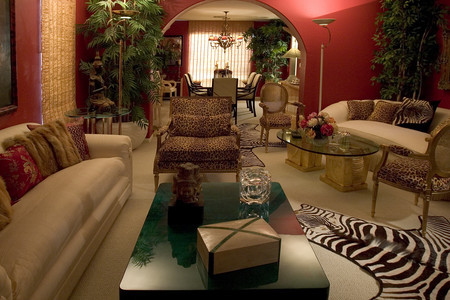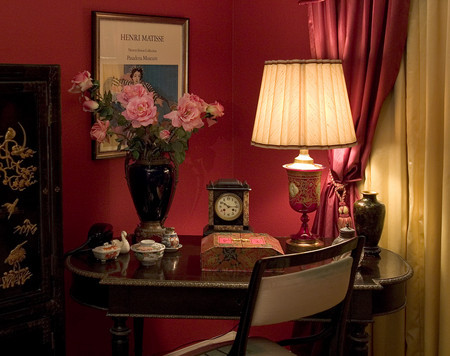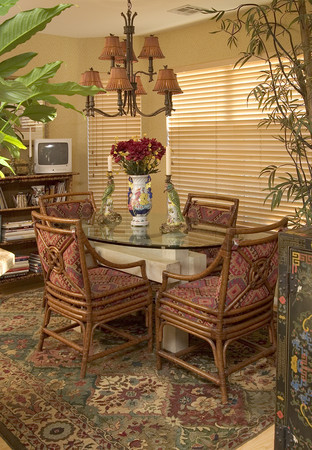Speak ‘feely’ about project before hiring designer
The trees have long since shed their leaves and new buds have begun their irrepressible march to the surface. The gardening tools are already on display along with Valentine's Day gift ideas and despite an atmosphere of economic uncertainty, homeowners are once again beginning to take a look around and thinking hard about home-improvement projects and decorating ideas that had long been put on hold.
Some will decide that they can do it themselves and will jump headlong into the fray. Still others will realize that the best way to proceed is to find and hire a professional interior designer to help them bring their dreams to fruition. It's a big step either way you look at it, but nevertheless it's a decision to proceed with a goal in mind -- and that's a positive first step in the right direction.
But, with all things considered, what could possibly be more fundamental, not to mention cost effective, than to have a professional on board to guide you with the best choices for furniture designs, fabrics, backgrounds and a host of other decisions that will have to be made? Through the years, I've seen how the process can be overwhelming for those who attempt to go it alone and they wind up making costly mistakes, having to experience the heartbreak of paying two and even three times for something until they find the right one.
How to decide who you should hire to virtually live and work in your home for the next few months -- or even longer -- is no laughing matter. Friends and business associates will no doubt refer you to designers that they've used or they know to be good or, even more importantly, steer you away from those that aren't.
You will interview these perspective candidates and give it your best shot. And you'll find, for sure, that designers have different ways of working and a number of ways of charging for their efforts. You'll discover that there's no such thing as a typical fee, but believe me, that's no cause for panic because there's really no great mystery to the way in which designers work or charge for their services.
In talking with other design professionals, and after years in my own practice, it seems that most residential designers use one of the following methods or a combination of these to determine their fee.
Fixed fee (or flat fee). The designer will furnish the client (that's you) with a specific fee that will cover most, if not all, costs involved with his scope of services, usually not including reimbursement for expenses. This fee will cover the first stage of conceptual design through all layouts and specifications to the final installation. This fee will not include the cost of furniture or materials and is usually based on the square footage of the project.
Hourly fee. This fee is based on the actual time spent on the project or a specific service and can range from $75 to $200 per hour.
Cost plus. The designer will specify and purchase all furnishings and materials at the net or designer cost (which can actually be as much as 40 percent lower than retail pricing -- so that often you are indeed paying less than you normally would on your own) and then resell these items to the client for the price paid by the designer with an additional markup or percentage previously agreed to by the client. This fee serves to compensate the designer for his time and effort on your behalf and is usually in the 35 percent range.
Additionally, it needs to be said that most designers (myself included) will not begin a project without requiring the client to pay some kind of a design fee or retainer. This might be seen as good faith money or a firm commitment that the client will indeed go forward with the scope of work agreed upon and covers the initial time for the designer to create an overall design concept and any preliminary floor plans and layouts.
Retainers differ from a design fee in that the retainer amount is applied by the designer to the final balance due on the project and is held in escrow until that time.
But, whichever way you agree to go, it's advisable (in order to avoid any future misunderstanding) to have some kind of a written agreement or contract covering the scope of the project before any design services have been rendered. In other words, plainly put, your financial arrangement with a designer should simply be viewed like any other business decision.
And so, even before you put your "focus on furniture" you really should have a clear view of where you're going with your design project and just how you plan on getting there. The more research and planning you can do for yourself initially, before you ever start, the more successful you'll be in controlling costs in today's challenging marketplace. And really, there's no better way to achieve this goal than retaining the services of a professional designer. Working hand-in-hand you'll be able to resolve the money issues so that you can relax and enjoy the power of design and how it can change your life.
Stephen Leon is a licensed interior designer and president of Soleil Design International; he has been designing and manufacturing custom furniture and cabinetry for more than 25 years. He has served on the board of directors of the Central California/Nevada Chapter of the American Society of Interior Designers. Questions can be sent to stephen@soleildesign international.com.



















